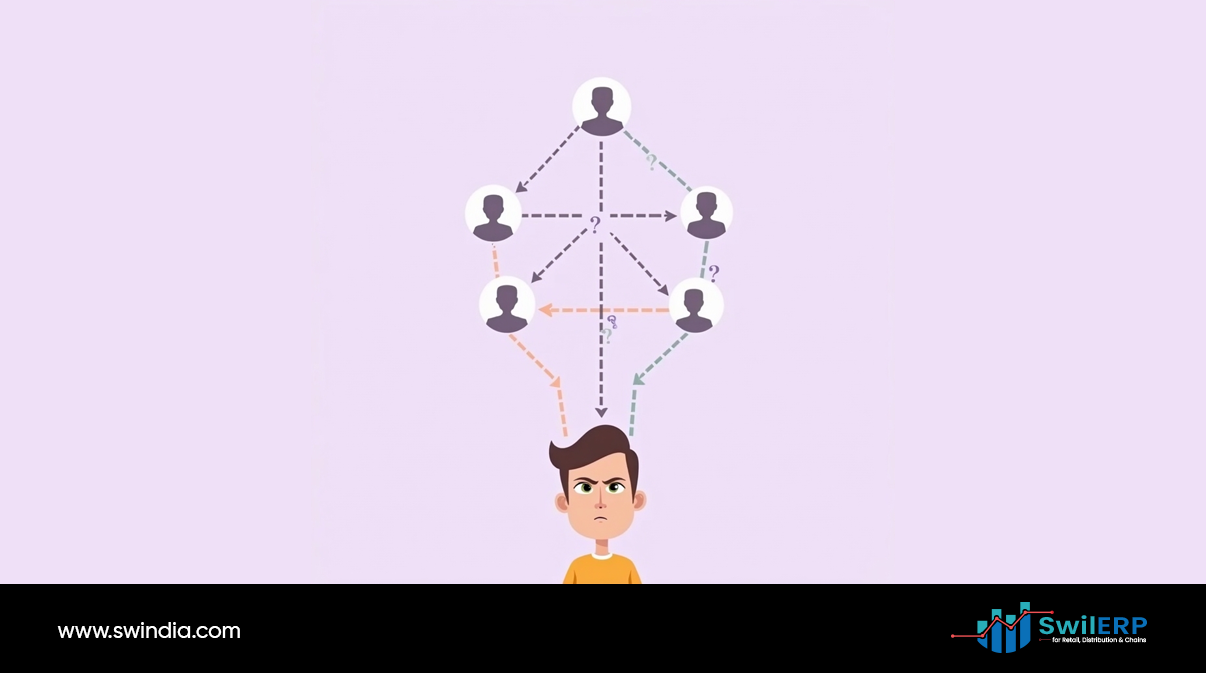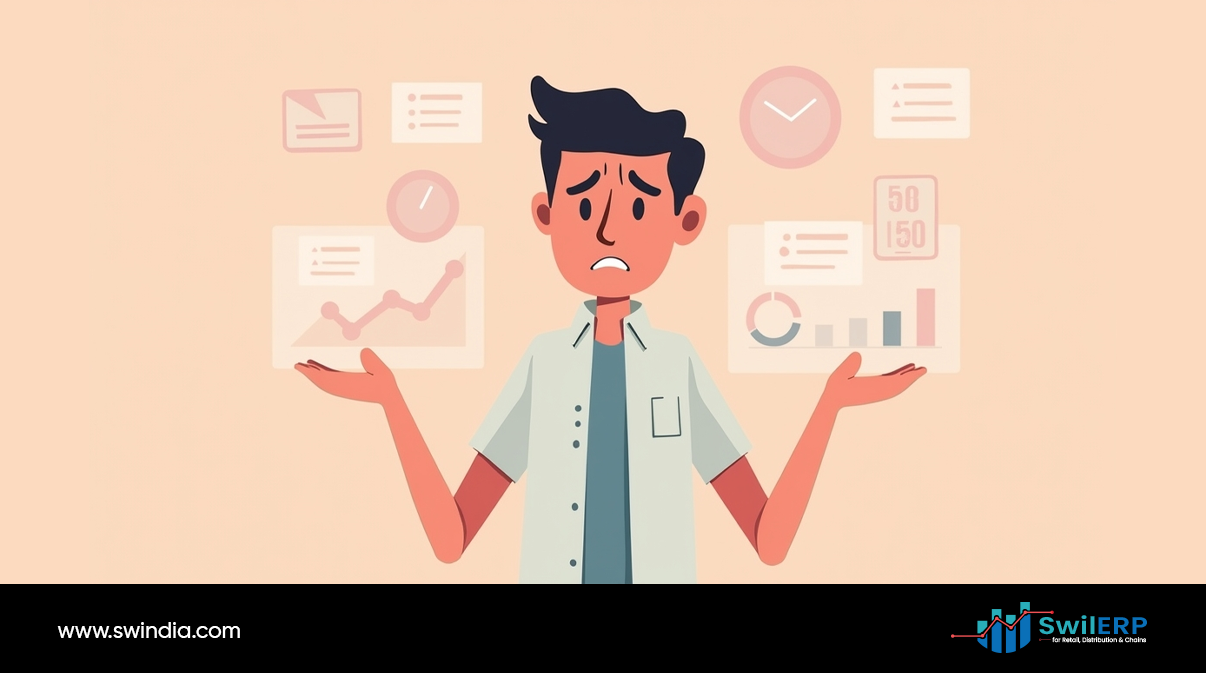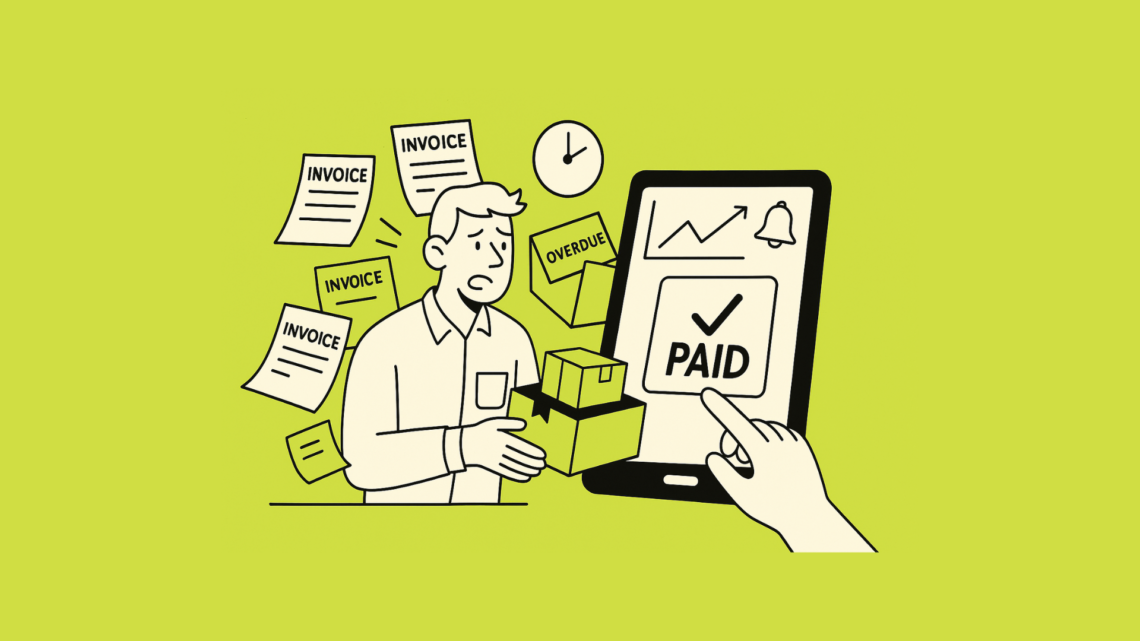Every wholesaler and distributor knows the pain of chasing down payments. Your invoices sit unpaid for weeks—or even months—while you juggle supplier dues and payroll. But it’s rarely malicious. In most cases, distributors aren’t trying to stiff you; they’re trapped in manual processes, information gaps, and cash‑flow puzzles. Without a centralized ERP system, they simply don’t have the visibility or control to pay on time.
Let’s explore the unseen reasons behind delayed payments—and how ERP turns the tables.
1. Lost Invoices and Paper Trails
The invisible invoice
In a paper‑based world, invoices get stapled, photocopied, faxed, and filed. Somewhere between the delivery dock and the finance team, your paper bill goes missing.
Why it happens
- Multiple mailboxes (email, fax, courier)
- Manual data entry errors
- Physical files stacked on desks
ERP to the rescue
Every invoice arrives digitally, tagged to the right purchase order. A central inbox captures all bills. No more “Did we get it?” calls—everyone sees the same screen.
2. Unclear Approval Chains

The passing‑the‑buck game
Sales needs delivery confirmation. Warehouse needs stock check. Finance needs manager sign‑off. Each step adds days.
Why it happens
- No defined workflows
- Verbal handoffs without tracking
- Forgotten signatures
ERP to the rescue
Role‑based workflows automate each step. Once goods are marked “Received,” the system routes the invoice to the right approver with a single click. Automated reminders nudge managers until they sign off.
3. Cash Flow Plateaus
The financier’s dilemma
Distributors run on tight margins and narrow payment terms. If cash-in doesn’t align with cash-out, priorities shift—and vendor payments slip.
Why it happens
- Mismatched dates for sales receipts vs. supplier invoices
- No real‑time cash‑flow view
- Reliance on static spreadsheets
ERP to the rescue
Instant cash‑flow dashboards show upcoming receipts and dues side by side. You can filter by customer, region, or product line to decide which invoices to prioritize. Forecast accuracy jumps, and payment cycles tighten.
4. Manual Reconciliation Headaches
The data‑entry nightmare
Someone in accounting spends days matching bank statements to dozens of invoices. Discrepancies emerge—but by then everyone has moved on.
Why it happens
- Manual bank CSV imports
- Typos in remittance advice
- Multiple payment references per invoice
ERP to the rescue
Bank feeds integrate directly into the ERP. Auto‑match rules pair payments to invoices instantly. Any exceptions highlight themselves, cutting reconciliation from days to minutes.
5. Invisible Early‑Payment Discounts
The missed opportunity
Distributors often qualify for early‑payment discounts from suppliers. Without visibility into upcoming cash positions, they rarely take advantage.
Why it happens
- Cash‑flow uncertainty
- No alerts for discount deadlines
- Manual calculation of discount vs. working capital benefit
ERP to the rescue
The system flags payment windows and calculates savings automatically. One click in the ERP settles the bill early, locking in 1–2% cost reductions that directly boost margins.
6. Vendor Portal Frictions
The communication gap
When distributors can log into a vendor portal to view statements, request clarifications, or upload remittance proofs, they pay faster. Without it, they call or email—and requests get buried.
Why it happens
- Lack of digital collaboration tools
- Time zone or language barriers
- No self‑service option
ERP to the rescue
Modern ERP platforms include vendor portals. Distributors see open invoices, upload payment proofs, and raise queries in real time. This transparency reduces follow‑up calls by up to 80%.
7. Aging Receivables Impact

The domino effect
Delays in your receivables eventually force distributors to delay payables. If their customers aren’t paying on time, they can’t pay you either.
Why it happens
- No visibility into customer collections
- Disconnected AR and AP processes
- No aging analysis to prioritize collection efforts
ERP to the rescue
Unified AR/AP modules show both receivables and payables in one dashboard. Distributors can chase overdue customers proactively, freeing up cash to settle their own bills.
8. Hidden Costs of Delay
The real‑world price tag
Every extra day beyond terms increases financing costs, late fees, and operational friction. Over a year, even a slight increase in Days Payable Outstanding (DPO) can translate into lakhs in interest or penalties.
Why it happens
- Rising working‑capital requirements
- Spot borrowing at high interest
- Strained supplier relationships
ERP to the rescue
Built‑in financial analytics calculate the true cost of delayed payments. Distributors see an on‑screen alert: “Pay these invoices today to save ₹X,XXX in borrowing costs.”
9. Cultural Resistance to Change
The human factor
Even when tech solutions exist, adoption stalls. Teams cling to familiar spreadsheets and email chains, fearing new systems will slow them down.
Why it happens
- Lack of training
- Fear of technology
- Perceived complexity
ERP to the rescue
Modern ERPs offer intuitive, mobile‑friendly interfaces and on‑the‑job guidance (tooltips, walkthroughs). Quick‑start templates and role‑based dashboards minimize friction. A phased rollout and targeted training build confidence, not resistance.
10. The Path to Faster Payments

- Audit Your Current Workflow
Map every step from invoice receipt to payment clearance. Identify bottlenecks. - Select an ERP with Strong AP/AR Modules
Look for built‑in bank feeds, approval workflows, aging dashboards, and vendor portals. - Implement in Phases
Start with invoice capture, then approvals, then reconciliation and vendor self‑service. - Train Your Team
Use role‑based training, short video demos, and hands‑on sessions. - Monitor Key Metrics
Track DPO, days sales outstanding (DSO), and early‑payment savings. Set targets to improve month by month.
Conclusion
Distributors delay payments not out of malice, but because manual, fragmented processes trap them in inefficiency. An ERP system shines a light on every step—streamlining invoice capture, approvals, reconciliation, and cash‑flow management. By removing those hidden frictions, distributors not only pay faster, they strengthen supplier relationships, reduce costs, and position themselves for growth.
If you’re ready to stop the payment‑chase and start building trust, explore ERP solutions that put visibility and automation at the heart of your finance operations. Your cash‑flow (and your suppliers) will thank you.









